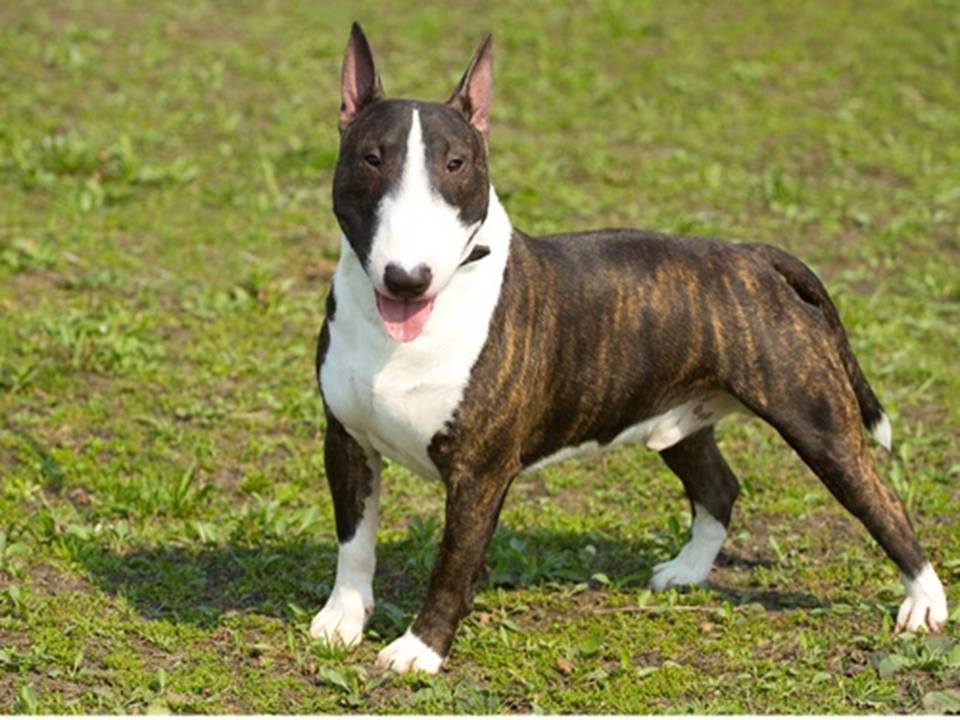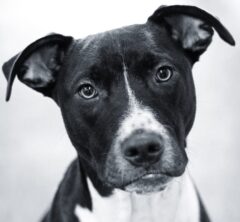The English Bull Terrier
The Bull Terrier is a breed known for its unique egg-shaped head, muscular body, and lively personality. Its history began in England, where it was originally bred for dog fighting. Over time, the Bull Terrier transformed from a fierce fighter to a loyal and affectionate companion. To understand this breed, we need to explore its origins, its ties to bull-baiting and dog-fighting, and how selective breeding and societal changes shaped the Bull Terrier we know today.
Early Origins: Bull-Baiting and the Bull and Terrier
In 19th-century England, blood sports like bull-baiting and bear-baiting were popular. Bull-baiting involved dogs attacking a tethered bull. Dogs used in these sports needed strength, courage, and tenacity. The early ancestors of the Bull Terrier likely had these traits, but they looked very different from today’s Bull Terrier.
In 1835, the British Parliament passed the Cruelty to Animals Act, which banned bull-baiting. However, dog-fighting became a secret replacement. Breeders started creating dogs that could excel in this brutal sport. They crossed Bulldogs with Terriers to produce the “Bull and Terrier.”
The Bulldog contributed strength and a powerful jaw, while the Terrier added speed, agility, and a fierce temperament. The Bull and Terrier became popular not only for fighting but also for ratting, a sport where dogs killed rats for entertainment.
James Hinks and the Modern Bull Terrier
James Hinks, a dog breeder from Birmingham, played a key role in shaping the modern Bull Terrier. In the 1850s, Hinks wanted to refine the Bull and Terrier’s appearance. He aimed to create a more balanced and attractive dog while keeping its strength and character.
Hinks crossed the Bull and Terrier with the English White Terrier (now extinct) and possibly the Dalmatian. This breeding introduced the Bull Terrier’s clean, white coat and streamlined look. Hinks also focused on improving the dog’s temperament, making it more suitable as a companion rather than a fighter.

Hinks’ new breed became known as the “White Cavalier” because of its elegant white coat and gentlemanly behaviour. By 1862, the Bull Terrier appeared in dog shows, marking its shift from a fighting dog to a show dog and family pet. Its unique egg-shaped head quickly made it a public favourite.
The Development of the Coloured Bull Terrier
For many years, the Bull Terrier was only white, thanks to Hinks’ breeding preferences. However, the all-white dogs often had health issues, especially deafness. To address this, breeders began introducing colour back into the breed. They crossed white Bull Terriers with Staffordshire Bull Terriers, creating coloured Bull Terriers in the early 20th century.
Coloured Bull Terriers could have brindle, fawn, or tricolour coats. This helped diversify the gene pool and reduce health problems while keeping the breed’s distinctive look and personality. By the 1920s, both white and coloured Bull Terriers were recognized as part of the same breed. However, white Bull Terriers remained more popular in dog shows due to their striking appearance.
Role in Popular Culture and as a Companion
Despite its fighting past, the Bull Terrier has become a playful and loyal family pet. The breed has also appeared in popular culture, further boosting its reputation. One famous example is “Bullseye,” the mascot for Target Corporation, with its white coat and black eye patch. In literature, Bull Terriers feature in stories like The Incredible Journey, which inspired a Disney film. These stories highlight the breed’s intelligence, courage, and loyalty.
Bull Terriers are known for their unique personalities. They are often described as clownish, mischievous, and affectionate. While they can be stubborn, they are also gentle and loving with proper training. The breed’s history as a fighter contrasts sharply with its modern role as a devoted companion. Bull Terriers get along well with children and other pets, making them excellent family dogs.
The Bull Terrier Today
Today, the Bull Terrier is a loyal, intelligent, and energetic breed. It serves as both a companion and a show dog. The breed’s appearance has stayed consistent since Hinks’ time, with its egg-shaped head, muscular build, and short coat remaining key features. Bull Terriers are playful and full of energy, but they also have a stubborn streak that endears them to their fans.
In terms of health, modern Bull Terriers are generally strong but can face genetic issues like deafness (especially in white dogs) and skin problems. Responsible breeders work to reduce these risks through careful breeding practices.
Conclusion
The Bull Terrier’s history reflects broader social changes, from the brutal blood sports of the 19th century to the modern demand for loyal, well-tempered pets. Once bred for strength and aggression, the Bull Terrier has become a beloved family companion. Its distinctive looks and lively personality make it one of the most remarkable success stories in canine breeding. Today, the Bull Terrier stands as a testament to the power of selective breeding and responsible ownership.


